Up your game by choosing the right type of cookware for the job.

The selection of cookware at a kitchen store can feel dizzying — and the questions pile up quickly when browsing. Why are some pots and pans so much more expensive than others? What is the deal with cast iron? Are nonstick pans toxic? Luckily, the answers are close at hand. These are the most common varieties of cookware and why you’d choose one over another.
NONSTICK
Lightweight, multipurpose and inexpensive, nonstick pans are popular for a reason. They’re made from aluminum or stainless steel and covered in one of two types of nonstick coating, known as traditional (or Teflon) or ceramic. On a traditional nonstick pan, the coating is often made from a compound called polytetrafluoroethylene (PTFE). While most of the data suggests it’s safe, it’s unwise to heat a nonstick pan above 500°F, as it can emit gases that are toxic to birds (and unhealthy for humans). Don’t leave your pan empty over a flame, as this can cause the temperature to go too high. Another chemical known as perfluorooctanoic acid (PFOA) is also used in the process of making Teflon. While PFOA is a carcinogen, virtually none of the chemical is left in the final product as it’s burned off during manufacturing. In fact, the American Cancer Society does not consider it to be present in high enough quantities in pans to be harmful. However, PFOA and its salts do have damaging ecological effects, particularly on wildlife, so it’s worth looking for pans made without it.
A “ceramic” nonstick pan is actually a misnomer — it’s coated with silicon, not ceramic. (It got its name because silicon is made with sand, like ceramics, and the smooth surface resembles porcelain.) Unlike traditional nonstick pans, they are safe up to 800°F.
If you’ve started to notice your nonstick pan sticking, there might be a surprise culprit: Cooking spray.
This story is from the May - June 2019 edition of Clean Eating.
Start your 7-day Magzter GOLD free trial to access thousands of curated premium stories, and 9,000+ magazines and newspapers.
Already a subscriber ? Sign In
This story is from the May - June 2019 edition of Clean Eating.
Start your 7-day Magzter GOLD free trial to access thousands of curated premium stories, and 9,000+ magazines and newspapers.
Already a subscriber? Sign In
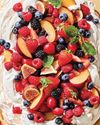
Summer Lovin'
Bushels of berries, peaches, nectarines, cherries, plums and more beckon at the market. Buy them all and soak up the sun in these bejeweled desserts.
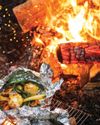
Into the Wild
Cooking along the 500-mile Colorado Trail taught Clean Eating editor Amanda M. Faison how to transform the campfire into a kitchen.
![[ Three Ways ] Tropical Punch [ Three Ways ] Tropical Punch](https://reseuro.magzter.com/100x125/articles/6144/994436/qSC8RoLOC1657772079105/crp_Hibiscus-Jamaican-sorrel-Recipes.jpg)
[ Three Ways ] Tropical Punch
Of African origin, hibiscus or Jamaican sorrel, is an important staple in West Indian and Mexican cooking. Hibiscus is sour enough to make you pucker and tropical enough to evoke the islands. Popularly brewed as a tea, the dried petals play well in savory or sweet recipes, too.
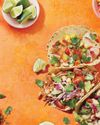
You Had Meat Tacos
"When it's done properly, taco should be a verb," declared Jonathan Gold, the late restaurant critic of the Los Angeles Times. Tacos are much more than a meal; they're an action.
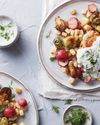
The Multitasker
Collagen usually makes headlines for its skin-saving benefits. But did you know that it's also an essential nutrient for joint health? (Especially if you sit at a desk all day.)
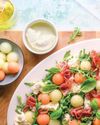
The Minimalist
Summer cooking is all about fresh and fast and avoiding the stove.
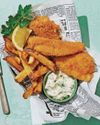
Lighten Up
If you've had an air fryer in your online cart since the start of the pandemic, it's time to commit. Let's just say it'll change your life.
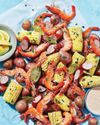
JUST RIGHT
The classic low-country boil is a celebration of place, tradition and ratio.
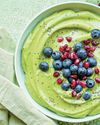
Recovery Days
The mantra that food is fuel is gold, but food as refuel is equally valuable.
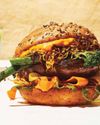
Lower your impact without sacrificing satisfaction.
Eat like a Reducetarian.